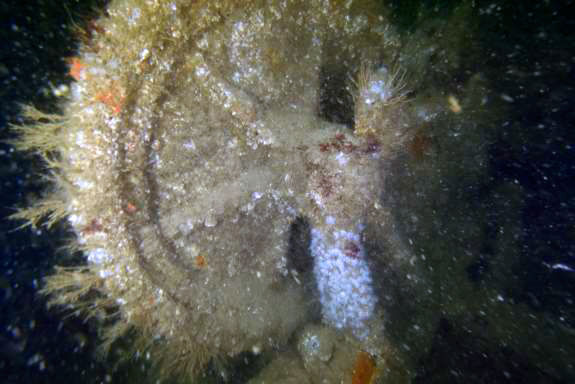Project Cardonnet

Since 1954 members of Southsea Sub-Aqua Club (SSAC) have enjoyed exploring our underwater world and the history that lays hidden by the depths. Over time our members have contributed much to the recreational diving world and the wider community through their determination, skills and hard work. From the invention of Octopush (underwater hockey) to the discovery of the historic Tudor flagship ‘Mary Rose’1 SSAC Branch2 have been one of the most active and productive branches of the British Sub-Aqua Club. For the last ten years the club have been actively recording many of the wrecks in its home waters along the south coast of England and in particular the many wrecks associated with the largest ever maritime invasion – the WW2 wrecks of 1944 Operation NEPTUNE3. It is a natural progression to extend this work to learn more about the Normandy campaign through the investigation and recording of unidentified wrecks of the Baie de Seine believed to be lost during this historic endeavour.
Project Cardonnet aims to investigate and record the WW2 Operation NEPTUNE wrecks of the Banc du Cardonnet, located in the Baie de Seine, Normandy. This ambitious project investigated two wrecks of US Landing Craft Tanks which were lost as they approached UTAH Beach as part of Operation NEPTUNE. US Landing Craft Tank (LCT(5) 458 and LCT(6) 593) both sank when they struck German mines and resulted in a tragic loss of life.
Shortly before dawn on 6 June 1944 eight US Navy LCTs carrying the 70th Tank Battalion’s DD tanks approached UTAH beach. As LCT(6) 593, with four of Company A’s DD Sherman tanks aboard, passed over the shallow Banc du Cardonnet it detonated an enormous German mine and was instantly broken in two. The power from the massive explosion propelled her men, vehicles and equipment into the air. Many lives were lost.

Just over 4 hours later LCT(5) 458 sank after hitting another mine while running into the beach. She was carrying 4 x M-7 Priests and supporting vehicles of Battery B, 29th Field Artillery. Many men lost their lives as the landing craft and her cargo of armoured fighting vehicles sank below the waves.
We were aware that in order to record and document the wrecks we would require permission from the Département des Recherches Archéologiques Subaquatiques et Sous-Marines (DRASSM). This was a daunting task as communications and application forms were necessarily to be conducted in French. Thankfully the Google translate site proved to be fairly reliable but we also contacted a former club member (Alain Demairé) who kindly provided a much needed conduit for conversations and his support to our project was highly valued.
Cécile Sauvage at DRASSM advised that in order to conduct the project all divers were required to obtain certification by the Institut National Plongee Professionnelle (INPP) equivalence at Level 1B. This required medical endorsement from a Hyperbaric Doctor and CMAS 3* or HSE commercial diver equivalence. Of the 8 divers who applied for INPP certification 7 were awarded INPP Level 1B. The other recreational divers who were part of the group were not permitted to dive on the same site at the same time that the project divers.
We are most grateful for the support of the British Sub-aqua Jubilee Fund and The BSAC Expedition Grant Scheme for their generous support ot the Expedition.
For this project, members of the Project Cardonnet team were awarded the BSAC Expeditions Trophy 2018.To read our news report, click here. To read the BSAC's news story, click here.
To read more about the BSAC Expeditions Trophy, click here.



